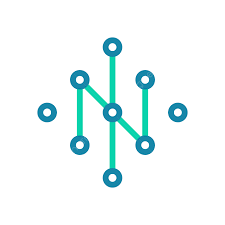Data communication is the foundation of our digital world, enabling the exchange of information between devices. It’s the process of transferring data, like text, images, audio, video, or any digital format, from a source to a receiver. Here’s a detailed breakdown of data communication:
Components of Data Communication:
- Data/Signals: The information being transferred, represented as electrical or electromagnetic signals. Data can be analog (continuous) or digital (discrete, often as 0s and 1s).
- Transmission Medium: The physical path through which the signal travels. Examples include cables (twisted pair, coaxial, fiber optic), wireless channels (radio waves, microwaves).
- Protocols: A set of rules that govern how data is formatted, transmitted, and received. Protocols ensure data is delivered accurately and efficiently.
- Devices: The equipment involved in sending and receiving data. These can be computers, servers, routers, switches, modems, etc.
Data Transmission Process:
- Data Conversion: The source device converts the data (text, image, etc.) into a digital format (often a stream of 0s and 1s) suitable for transmission.
- Modulation: The digital data is added (modulated) onto a carrier signal (electrical or electromagnetic) for transmission over the chosen medium.
- Transmission: The modulated signal travels through the transmission medium (cable or wireless channel).
- Demodulation: At the receiving end, the carrier signal is separated from the data.
- Data Conversion: The received digital data is converted back into its original format (text, image, etc.) by the receiver device.
Types of Data Communication:
- Simplex Communication: One-way data flow, from sender to receiver only (e.g., radio broadcasts).
- Half-Duplex Communication: Two-way communication, but only one device can transmit at a time (e.g., walkie-talkie).
- Full-Duplex Communication: Two-way communication, both devices can transmit and receive simultaneously (e.g., telephone conversation).
Network Topologies:
The way devices are arranged on a network is called the network topology. Common topologies include:
- Bus: All devices connected to a single cable. Simple and inexpensive, but a fault can disrupt the entire network.
- Star: Devices connected to a central hub or switch. Easier to manage and troubleshoot, but relies on the central device.
- Ring: Devices form a closed loop. Ordered data flow, but a single fault can disrupt the entire network.
- Mesh: Devices interconnected like a web. Offers redundancy and reliability, but complex to manage.
- Tree: Combines star and bus features. Scalable and manageable, but relies on central devices.
Error Detection and Correction:
Data transmission is susceptible to errors caused by noise or interference. Techniques like error detection codes and retransmission are used to ensure data integrity.
Data Communication Applications:
Data communication is the backbone of various applications:
- Internet: Enables global communication and information sharing.
- Email: Electronic messaging for personal and business communication.
- File Sharing: Transferring files between devices on a network.
- Video Conferencing: Real-time audio and video communication.
- Social Media: Connecting and sharing information on online platforms.
By understanding data communication, you gain a deeper appreciation for the complex processes that power our interconnected world.
Short Questions
- What is data communication?
Data communication is the transfer of information (data) between a source and a receiver. This information can be in various forms like text, images, audio, video, etc.
- What are the basic components involved in data communication?
There are three main components:
- Data/Signals: The information being transferred, converted into electrical or electromagnetic signals.
- Transmission Medium: The physical path carrying the signal, like cables or wireless channels.
- Devices: The equipment sending and receiving data, such as computers, routers, and modems.
- What are the different types of data transmission based on direction of flow?
There are three main types:
- Simplex: One-way communication, information flows in only one direction (e.g., radio broadcasts).
- Half-Duplex: Two-way communication, but only one device transmits at a time (e.g., walkie-talkie).
- Full-Duplex: Two-way communication, both devices can transmit and receive simultaneously (e.g., phone conversation).
- What is the purpose of modulation in data communication?
Modulation is the process of adding the digital data to a carrier signal (electrical or electromagnetic) for transmission over the chosen medium. This allows the data to travel efficiently through the chosen medium.
- What are some common applications of data communication?
Data communication is used in various applications:
- Internet: Enables global communication and information sharing.
- Email: Electronic messaging for personal and business communication.
- File Sharing: Transferring files between devices on a network.
- Video Conferencing: Real-time audio and video communication.
- Social Media: Connecting and sharing information on online platforms.

